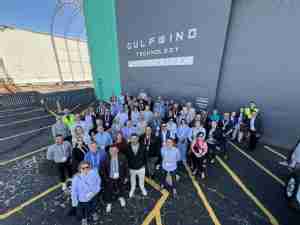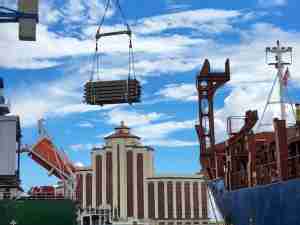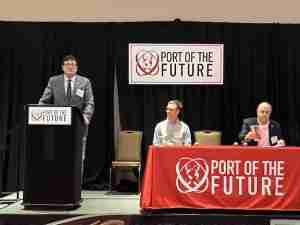The higher volumes in 2009 were not driven by one line of business, but were up for most Prince Rupert facilities including containers and bulk cargo.
The Fairview Container Terminal handled 265,259 TEUs (20-foot equivalent units) in 2009, a 45.9 per cent increase over 2008, despite the global economic downturn that has resulted in declining container traffic through other North American West Coast ports.
Prince Rupert Port Authority President & CEO Don Krusel says over the first two full years of operations, Fairview Terminal and CN's North American network has provided shippers unparalleled reliability, speed and cost efficiency year round.
"We are confident that the Port of Prince Rupert and our partners, including CN, Maher Terminals, longshore workers and the shipping lines, have demonstrated the competitive advantages of the Port of Prince Rupert as a gateway for transpacific container trade," notes Mr. Krusel. "Our continued growth reflects the increasing confidence and satisfaction of our customers with the quality of service they are receiving through the Prince Rupert Gateway."
On the bulk cargo side of the business, Prince Rupert Grain (PRG) volumes jumped 35.1 per cent to 5,080,834 tonnes, the terminal's highest throughput since 1994. Wheat shipments, the core of PRG's business, were up 55.8 per cent to 4,638,010 tonnes, offsetting decreases in volumes for barley, canola and grain pellets.
Ridley Terminals Inc. experienced a surge in coal volumes in the second half 2009, following a weak first half, to push total traffic to 4,159,679 tonnes. This was down 14.2% for the year compared to 2008. While overall metallurgical and thermal coal volumes declined 30.9 per cent due to weak global demand, this was significantly offset by strong increases in coking coal (110.5 per cent), petroleum coke (46.4 per cent) and wood pellets (108.7 per cent).
The Port of Prince Rupert also experienced increased cargo volumes for logs (79.6 per cent) and wax (30.8 per cent).
In the cruise business, passenger traffic was down 46.8 per cent as a result of the loss of a weekly cruise vessel port of call in 2009. Prince Rupert welcomed 55,097 guests from 31 cruise vessel visits last year, compared to 103,630 on 63 ships in 2008, the port's best year since becoming an Alaska cruise port of call in 2004. Despite this decline in cruise ship traffic, Prince Rupert continues to improve its cruise tourism capabilities to support future growth of the sector.
Looking ahead in 2010, Mr. Krusel says the port remains focused on growing container volumes and furthering the progress of the Phase 2 expansion of the Fairview Container Terminal. A second priority is the development of the Ridley Industrial Park to accommodate new terminal and logistic services development to support the expansion of the Port of Prince Rupert.
"We have not only created a new trade corridor for trans-pacific container trade, but also have drawn the attention of the shipping world and opened the door to a multitude of new investment and development opportunities."










